We may receive a commission when you use our affiliate links. However, this does not impact our recommendations.
 Chainsaw Carving is a unique art form that tends to fascinate viewers and carvers alike.
Chainsaw Carving is a unique art form that tends to fascinate viewers and carvers alike.
People often ask, “How did you start chainsaw carving?” And I’m eager to share a bit of my carving experience so far.
About a year and a half ago, I picked up a chainsaw for the first time, and decided to try my hand at chainsaw carving. Since then, I haven’t looked back.
But it didn’t just start with a chainsaw. The interest in woodcarving began about a year prior to that, while looking for ideas on homemade Christmas gifts. After watching a few YouTube videos and power-carving groups on Facebook, I decided to start small with a rotary tool.
I began sketching out basic designs of scraps of wood, made a couple of wood signs, Christmas ornaments, and etched designs on walking sticks.
I quickly grew impatient working with the small scale and wanted to work on larger projects, but lacked the necessary tools for the increased size. That’s when I started eyeing up my husband’s chainsaw. Not going to lie, it scared the crap out of me. The risk for injury was intimidating, so I soaked up as much info to start to feel comfortable with the idea. Geared up, which provided a reassuring sense of protection, and fired the saw up. Off I went on a determined girl-power mission to cut down a dead tree, dragged it into the yard, bucked it up, and attempted my first log carving.
The learning curve was steep. Just getting the feel for the saw, angles, pressure, and control took about 3 full carvings of “not great” results before improvements started happening.
Being “self-taught” has provided some really insightful learning through trial and error. I’ve worked through the kinks, found my groove, and techniques that works for me. But the learning doesn’t end – chainsaw carving is an ongoing journey of experimentation, creative problem-solving, and personal development as an artist.
I’d encourage anyone intrigued by the artform to at least give it a try. Here are a few tips that I learned from bumbling my way through beginning chainsaw carving.
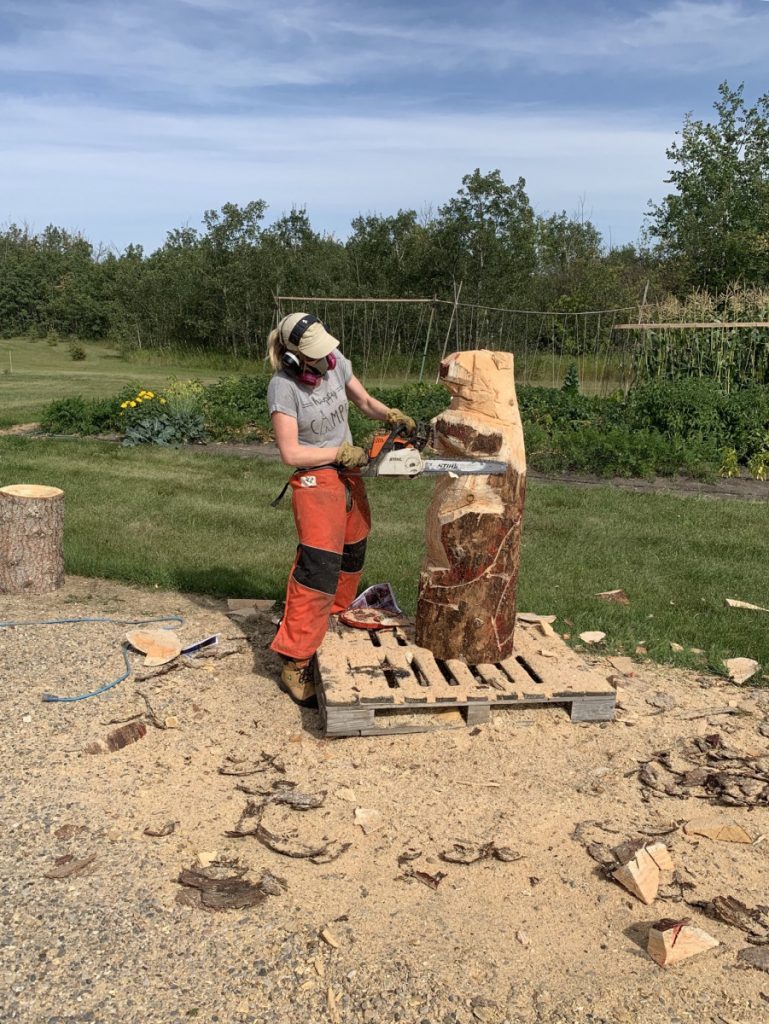 1) Safety First
1) Safety First
Chainsaw carving is inherently dangerous and it’s in a carver’s best interest to acknowledge the risk and respect the tools. Before even firing up the chainsaw for the first time, I read the manual (yes, the entire thing), took the chainsaw apart, put it back together, and just became familiar with the ins and outs of its operation. A bit of online research and watching videos on safe chainsaw operation were part of my self-imposed pre-use safety training.
Once I felt acquainted with the saw, I gathered personal protective equipment, which I feel is an ongoing requirement. This includes safety glasses, chainsaw chaps, gloves, and hearing protection. If I’m doing extra dusty work, I’ll add a face mask/respirator to keep the sawdust out of my lungs.
While the chainsaw may seem like the most dangerous tool in a carver’s collection, precautions are also necessary with other power tools that a carver may use. I have yet to have a chainsaw accident (thankfully), but its the angle grinder I’ve had a few knicks and near misses with.
So carve safe! And treat every tool like it could hurt you.
2) Start with Basic Shapes
Set yourself up for success and accomplishment by starting with basic shapes like a tree or a welcome sign. It provides opportunity to learn on a gentle learning curve, rather than jumping right into a complex 3D animal to start with. Just getting comfortable with the chainsaw and learning control is enough of a challenge at the beginning. Once chainsaw control becomes second nature, you can start challenging your sculptor mind with more complex subjects.
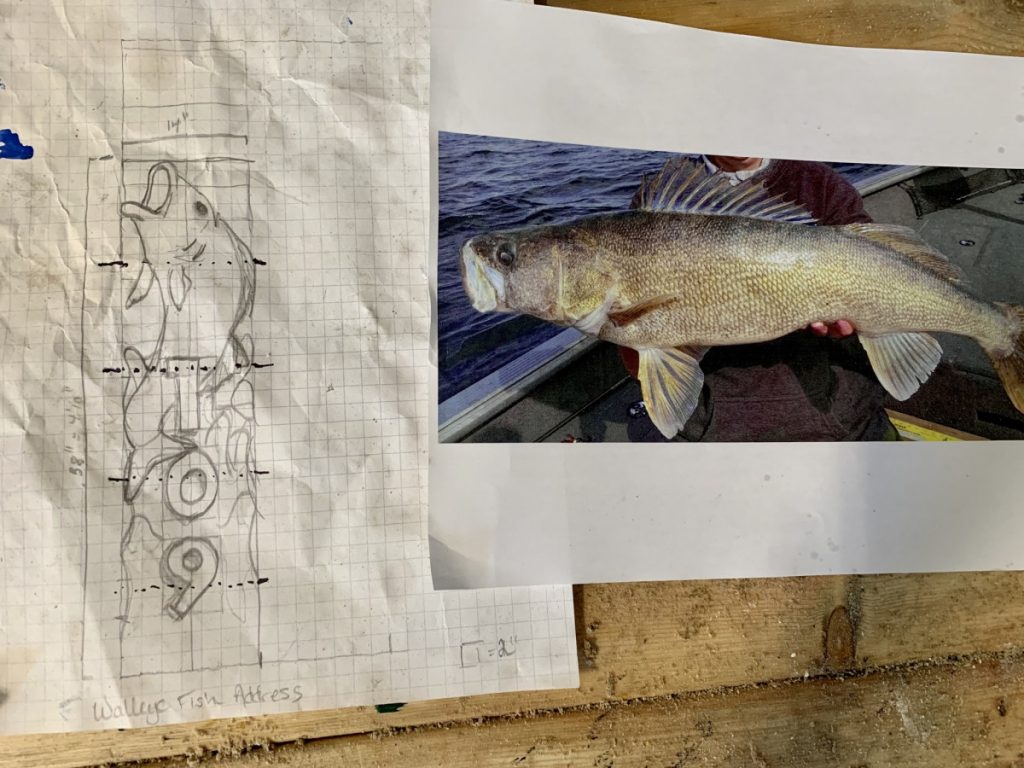 3) Start Small – But Not Too Small
3) Start Small – But Not Too Small
Starting with small carvings has its advantages, and you don’t feel so defeated and wasteful when the first ones don’t turn out as anticipated.
But speaking from my initial experience, a smaller carving doesn’t necessarily mean an easier carving. My first carving attempt was on a little 2 ft log and I found it so hard to maneuver the saw around the small-sized carving and couldn’t get the detail I’d hoped for. Even using a 16-inch chainsaw bar, I felt the size of the saw was just too large in comparison to the log and I often unintentionally overcut areas.
On the other end of the spectrum, the phrase “go big or go home” could also lead you down an intimidating path of more work than you’re ready for.
A happy medium, in my opinion, is a 3-4 ft piece of wood for a starting size.
4) Anchor Your Work
To avoid tipping or moving of smaller carvings during carving, you can anchor the log to something to keep it in place. Anchoring methods I’ve used include attaching a wide piece of plywood screwed into the bottom center of the log to provide a wider base, or clamping it in a wood bench vise.
When working with larger, heavier pieces, they’re not likely to move with the pressure of the saw, so anchoring may not be needed during the carving process. If it’s a large cut log, I just ensure it’s straight and level before working on it.
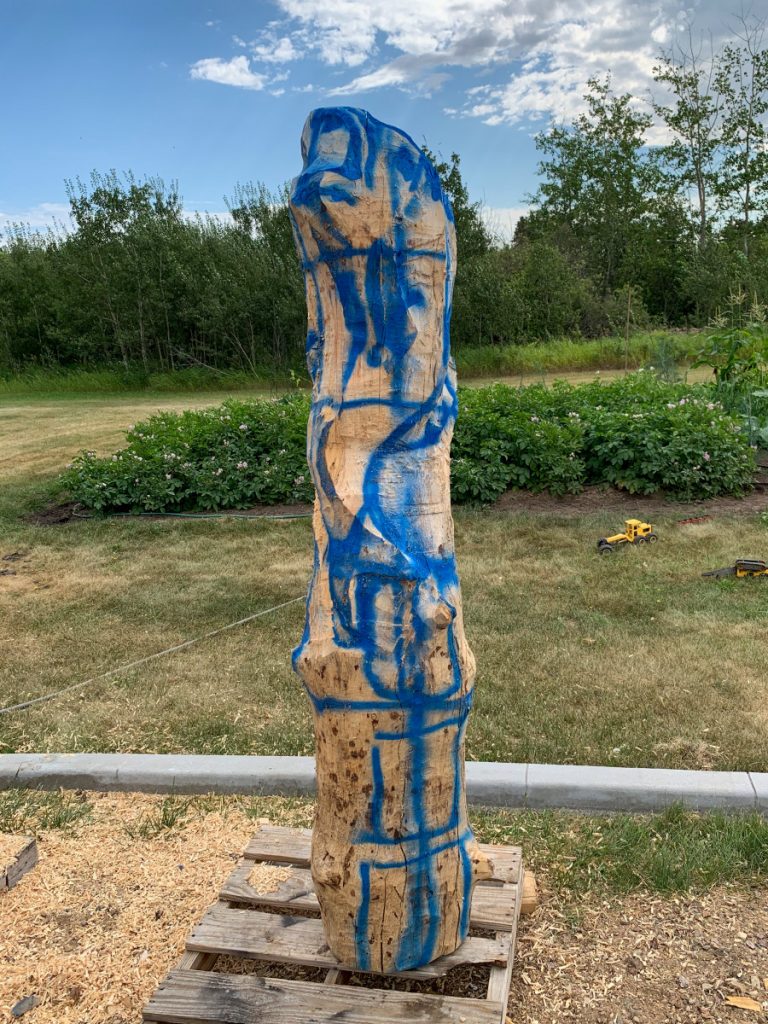 5) Physical Care
5) Physical Care
The most vital tool to maintain for a carver is their own body. If the body’s broken, there’s no carving happening.
Without a doubt, chainsaw carving is a full-body workout that takes me to the limits of what I can do.
Think of carving like an intense workout at the gym. It will probably take time to get used to the muscles being used, building strength and endurance. For safety’s sake, maintaining a level of physical fitness, stretching, rehydrating, and taking breaks are key to avoiding injury and ensuring long-term sustainability. And by all means, stop when tired or hurting.
Post-carving self-care may call for additional measures at times. As needed, this may include an Epsom salt bath soak to ease sore muscles, icing overused joints, anti-inflammatory medication, and deciding to take several days off to allow recovery.
While some carvers may have the stamina to bang out a whole carving in a single session or carve for full 8-hour days, I don’t think it’s reasonable to expect that high-level performance from every carver, especially beginners.
From my personal experience, I can usually keep up the stamina for about 2-3 hours of work before needing to take a break to recover (for both the body and the mind.) It takes several sessions to complete a carving. The hard work and time that goes into creating a piece makes it all the more gratifying in the end.
 6) Basic Carving Steps
6) Basic Carving Steps
While every carver has their own unique process and preferences, these are the basic steps I like to follow:
- Pick what you want to carve and search for reference pictures. I print off a couple photos to look at throughout the carving process.
- Make a scale drawing. I like sketching on graph paper to lay out the carving plan. My scale drawings usually include 1-foot markings on the height of the carving, and a center line down the middle. The grid makes it easier to copy to the wood afterwards. If you can draw 2 outlines (1 from the front and 1 from the side perspective) it makes carving a lot easier later on.
- Draw/spray paint the grid markings onto the intended piece of wood, then the general outline from the front, referring to the scale drawing.
- Carve out the front outline with a chainsaw.
- Redraw the grid where cut off, draw the side outline, and carve out the side profile.
- Complete the blocking out process with chainsaw by rounding off corners and removing as much bulk as feasible with chainsaw. As outlines are cut away, stop to redraw the layout often.
- Detailing – some details/textures are done well with a chainsaw, but the finer detail is often enhanced with other tools such as a smaller chainsaw carving bar, a die grinder, or rotary tool with burr bits.
- Finishing – sanding, cleaning the carving with compressed air, optional paint/stain/propane torch burning, and of course a topcoat sealer that’s ideally UV and water protectant.
That’s just a tip of the iceberg of what a beginner chainsaw carver might encounter along their journey into sawdust and two-stroke exhaust. The best way to learn is to get in there and try. Allow yourself the grace to make mistakes and learn from them. Have fun with trying something new and feel proud for challenging yourself!
No matter how it looks in the end, there will be someone out there that thinks what you’re doing is pretty darn SAWsome.
Michelle Thevenot is a chainsaw carver and artist from Osler, Saskatchewan, Canada. Find more of her work on Facebook, Instagram, and Youtube.
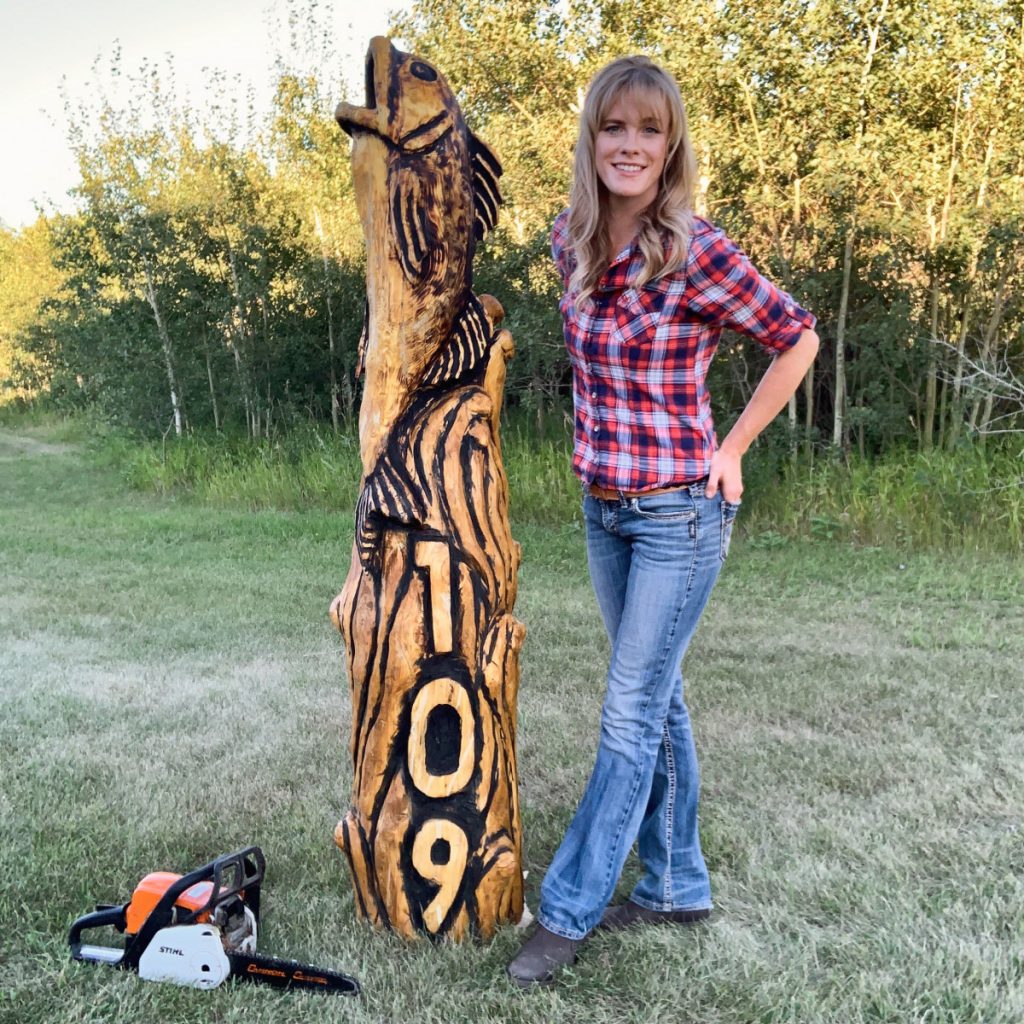
Here are some supplies and tools we find essential in our everyday work around the shop. We may receive a commission from sales referred by our links; however, we have carefully selected these products for their usefulness and quality.



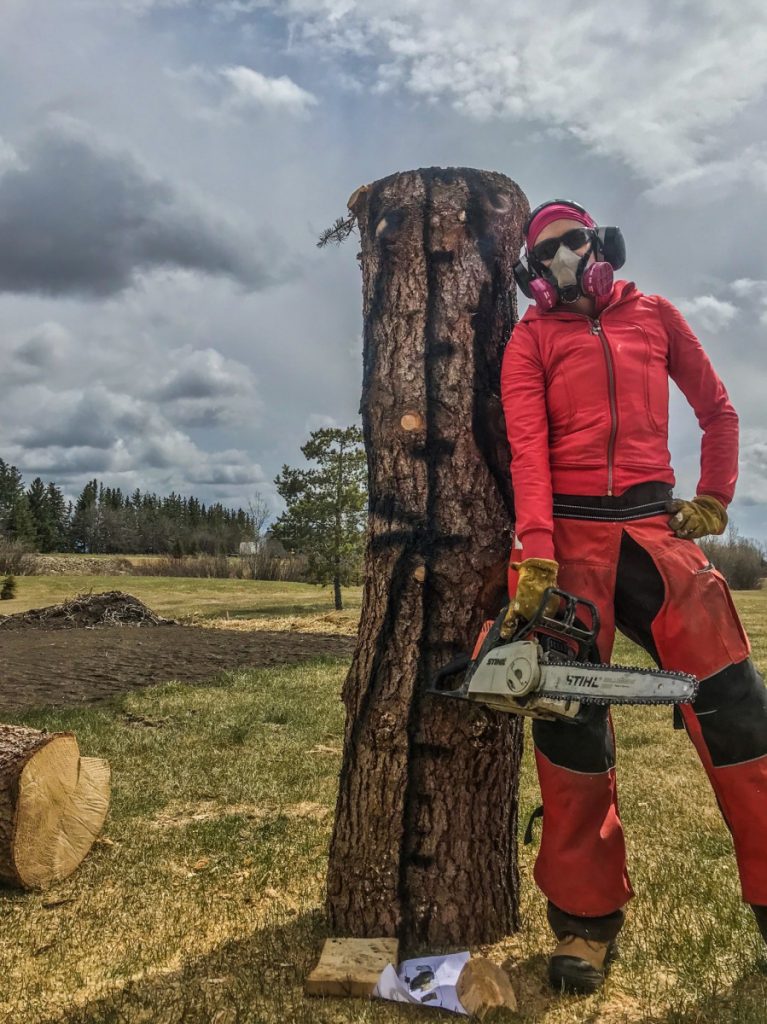 Chainsaw Carving is a unique art form that tends to fascinate viewers and carvers alike.
Chainsaw Carving is a unique art form that tends to fascinate viewers and carvers alike.




